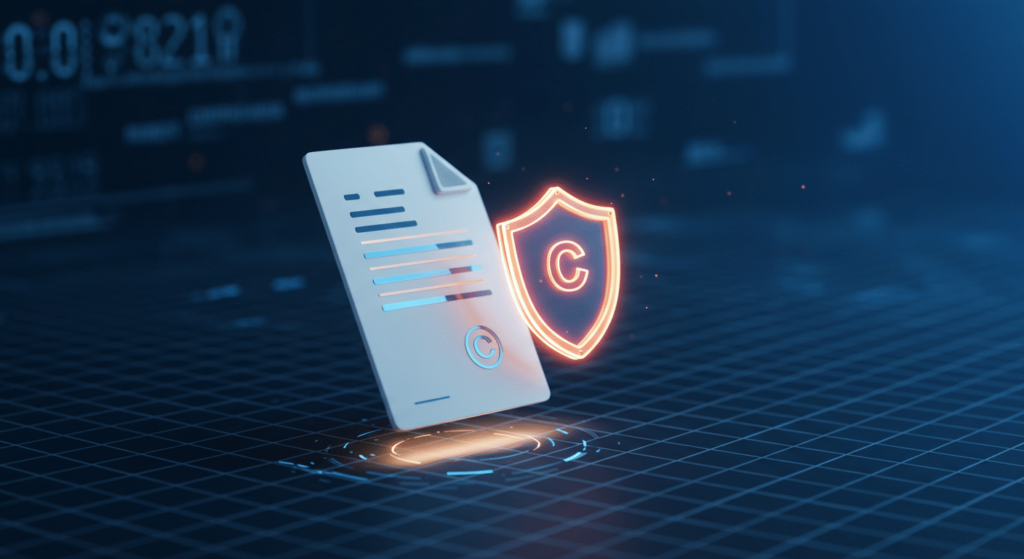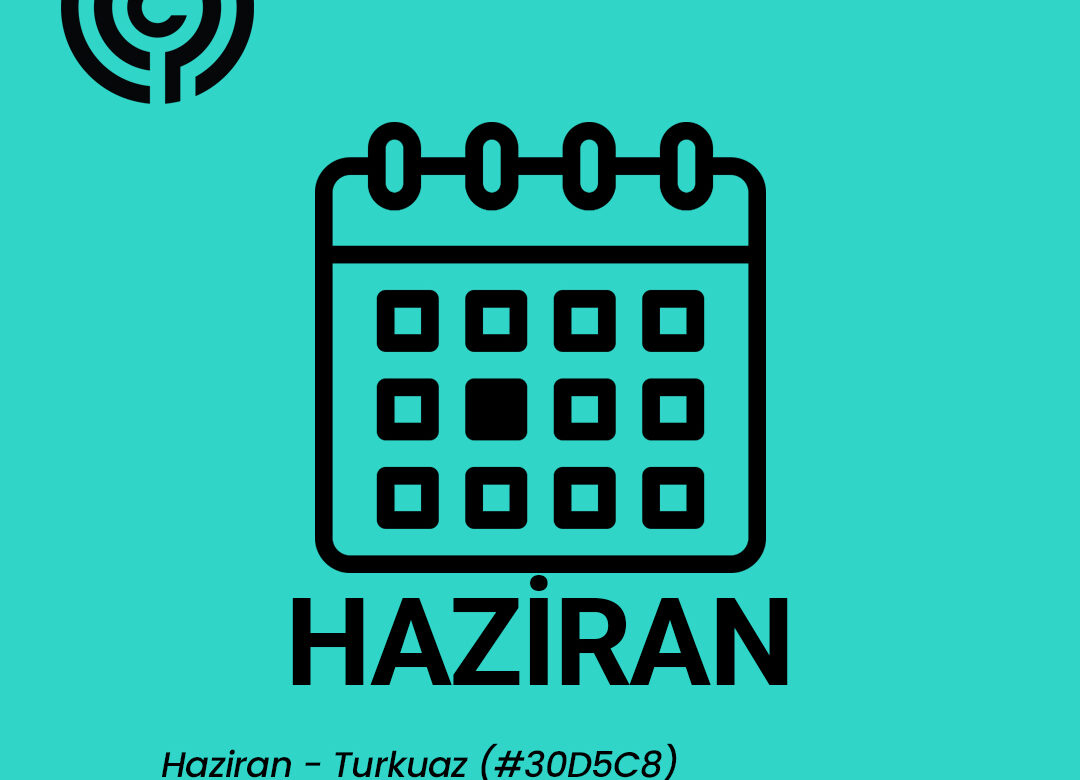Dijital dünyada içerik üreticisi olarak yer alıyorsanız, muhtemelen içerik hırsızlığıyla ilgili zorluklarla karşılaşmışsınızdır. İnternette paylaşılan her türlü içerik, ne yazık ki başkaları tarafından izinsiz bir şekilde kullanılabilir. “Çevrimiçi İçerik Hırsızlığıyla Mücadele: Kapsamlı Bir Rehber” başlıklı bu makalede, dijital telif hakkı koruma yasalarının temellerinden başlayarak, içerik hırsızlığını tespit etme ve önleme yollarına kadar birçok önemli konuya değineceğiz. İçerik sahipleri, web sitesi sahipleri ve dijital girişimciler için son derece faydalı olacak bu rehber, hem mevcut hırsızlıklarla başa çıkmak için reaktif önlemler sunacak hem de gelecekteki olayları önlemek için proaktif stratejiler geliştirmeye yardımcı olacaktır. Hazırsanız, dijital dünyada haklarınızı korumak için atmanız gereken adımları keşfetmeye başlayalım!
İçindekiler
- İçerik Hırsızlığını ve Haklarınızı Anlama
- Kopyalanan İçeriği Algılama
- Yasal İşlem Başlatmadan Önce Atılacak Adımlar
- İhtarname Gönderme
- DMCA Yayından Kaldırma Bildirimlerini Dosyalama
- Arama Motorlarına Raporlama
- Ek Yasal Seçenekler
- Gelecekteki İçerik Hırsızlığını Önleme
İçerik Hırsızlığını ve Haklarınızı Anlama
İnternet ortamında içerik oluşturucusu olarak, emeğinizin çalınması veya izinsiz kullanılması can sıkıcı bir durum olabilir. İçerik hırsızlığı, bir kişinin sizin yazılarınızı, görsellerinizi, videolarınızı ya da diğer dijital materyallerinizi izinsiz şekilde kopyalayıp kullanmasıdır. Bu durum, sadece emeğinizin karşılığını alamamanıza değil, aynı zamanda arama motoru sıralamalarınızın zarar görmesine de neden olabilir.
Haklarınızı anlamak ve korumak için bazı temel bilgilere sahip olmanız gerekir. İşte dikkat etmeniz gereken noktalar:
- Telif Hakkı Koruması: Türkiye’de ve birçok ülkede, orijinal bir içerik oluşturduğunuz anda otomatik olarak telif hakkı koruması altına girersiniz. Ancak, bu hakkı kanıtlamak için içeriklerinizi tarih damgasıyla arşivlemeniz faydalı olabilir.
- Creative Commons Lisansları: Eğer içeriklerinizi belirli koşullarda paylaşılabilir hale getirmek istiyorsanız, Creative Commons lisansları kullanabilirsiniz. Bu lisanslar, içeriğinizin nasıl kullanılabileceğini açıkça belirtir.
- DMCA Şikayetleri: Eğer birisi içeriğinizi izinsiz kullanıyorsa, DMCA (Dijital Milenyum Telif Hakkı Yasası) şikayet süreciyle haklarınızı savunabilirsiniz. Çoğu hosting sağlayıcı ve platform bu şikayetleri ciddiye alır.
Hangi durumların içerik hırsızlığına girdiğini anlamak için aşağıdaki tabloyu inceleyebilirsiniz:
| Durum | İçerik Hırsızlığı mı? |
|---|---|
| Sizin blog yazınızı kopyalayıp kendi sitesi üzerinde paylaşmak | Evet |
| Sizin içeriğinizi kaynak göstermeden sosyal medyada paylaşmak | Evet |
| Sizin izninizle içeriğinizi paylaşmak ve kaynak belirtmek | Hayır |
| Kendi yorumlarını ekleyerek alıntı yapmak ve kaynak göstermek | Hayır |
Unutmayın, haklarınızı bilmek ve gerektiğinde harekete geçmek, çevrimiçi varlığınızı korumanın en önemli adımlarından biridir. İçeriğinizin değerini korumak için hem yasal yolları hem de dijital araçları etkili bir şekilde kullanabilirsiniz.
Kopyalanan İçeriği Algılama
İnternetteki içeriklerinizi korumanın ilk adımı, bir içeriğin kopyalanıp kopyalanmadığını tespit etmektir. Neyse ki, bu konuda size yardımcı olabilecek birçok araç ve yöntem mevcut. Kopyalanmış içerikleri algılamak, hem marka itibarınızı korumak hem de SEO performansınızı artırmak için oldukça önemlidir.
- Google Arama: İçeriğinizden bir cümleyi alıp Google’da tırnak işaretleri içinde aratabilirsiniz. Bu basit ama etkili yöntem, kopyalanan sayfaları hızlıca bulmanıza yardımcı olabilir.
- Plagiarism Kontrol Araçları: Copyscape, Grammarly Plagiarism Checker veya Turnitin gibi araçlar, içeriğinizin başka bir yerde kullanılıp kullanılmadığını kontrol edebilir.
- Google Alerts: İçeriğinizin belirli anahtar kelimelerini Google Alerts’e ekleyerek,benzer içerikler yayınlandığında bildirim alabilirsiniz.
Ayrıca, WordPress siteniz varsa, içerik hırsızlığını tespit etmek için kullanabileceğiniz bazı eklentiler de mevcut. Bu eklentiler, sayfa kopyalamalarını ve izinsiz içerik kullanımlarını daha kolay bir şekilde yönetmenizi sağlar. İşte birkaç öneri:
| Eklenti Adı | Özellikleri |
|---|---|
| WP Content Copy Protection | Sağ tıklamayı ve metin seçimini engeller. |
| DMCA Protection Badge | DMCA koruma rozeti ekleyerek caydırıcılık sağlar. |
| Plagiarism Checker Pro | İçeriklerinizi otomatik olarak kontrol eder ve raporlar sunar. |
Bunların yanı sıra, düzenli olarak içeriklerinizi kontrol etmek ve telif haklarınızı korumak için bir strateji oluşturmanız önemlidir. Dijital haklarınızı korumak, sadece mevcut içeriklerinizi değil, gelecekteki çalışmalarınızı da güvence altına alır.
Yasal İşlem Başlatmadan Önce Atılacak Adımlar
Çevrimiçi içerik hırsızlığıyla karşı karşıya kaldığınızda, hemen yasal süreçlere başvurmak yerine önce bazı ön adımları atmak daha etkili ve hızlı çözümler sağlayabilir. Bu adımlar, hem zaman hem de maliyet açısından size avantaj sağlar. İşte bu süreçte dikkate almanız gereken noktalar:
- İçerik Hırsızlığını Belgelerle Kanıtlayın: İlk adım olarak, çalınan içeriğinizi ve hırsızlık yapılan platformdaki kopyasını belgeleyin. Ekran görüntüleri alın, tarih ve saat bilgilerini not edin. Ayrıca, çalınan içeriğin URL’sini ve kendi orijinal içeriğinizin URL’sini saklamayı unutmayın.
- Hırsızlık Yapan Tarafla İletişime Geçin: Çoğu zaman, içerik hırsızlığı kasıtlı olmayabilir. Karşı tarafla nazik bir dille iletişim kurarak içeriğin kaldırılmasını veya size atıf yapılmasını talep edebilirsiniz. Bu, genellikle sorunu çözmenin en hızlı yoludur.
- DMCA Bildirimi Gönderin: Eğer çalınan içerik bir web sitesinde yayınlanmışsa, DMCA (Dijital Milenyum Telif Hakkı Yasası) bildiriminde bulunabilirsiniz. Bu, içeriğin barındırıldığı siteye veya hosting sağlayıcısına gönderilen resmi bir taleptir.
DMCA bildirimi göndermek için genellikle aşağıdaki bilgileri sağlamanız gerekir:
| Gerekli Bilgi | Açıklama |
|---|---|
| Orijinal İçerik URL’si | Size ait olan içeriğin bulunduğu sayfanın bağlantısı. |
| Çalınan İçerik URL’si | Hırsızlık yapılan içeriğin yayınlandığı sayfanın bağlantısı. |
| İletişim Bilgileri | Adınız, e-posta adresiniz ve gerekirse telefon numaranız. |
Eğer bu adımlardan sonuç alamazsanız, yasal işlem başlatmayı düşünmeden önce bir avukata danışmanız faydalı olacaktır. Ancak genellikle yukarıdaki yöntemler, sorunu çözmek için yeterli olur.
İhtarname Gönderme
İçerik hırsızlığıyla mücadelede etkili bir yöntem, hukuki bir süreç başlatmak için karşı tarafa ihtarname göndermektir. Bu resmi belge, haklarınızı koruma niyetinizi açıkça ifade eder ve hırsızlık yapan kişiye ya da kuruluşa durumu düzeltmeleri için bir fırsat tanır. İhtarname, özellikle profesyonel bir dille hazırlanırsa, karşı taraf üzerinde caydırıcı bir etki yaratabilir.
İhtarname hazırlarken dikkat etmeniz gereken bazı önemli noktalar şunlardır:
- Kendi haklarınızı net bir şekilde belirtin: Hangi içeriğin çalındığını, size ait olduğunu ve bu içeriğin izinsiz kullanıldığını açık bir şekilde ifade edin.
- Taleplerinizi sıralayın: Çalınan içeriğin kaldırılmasını, size uygun bir tazminat ödenmesini ya da ihlalin tekrarlanmaması için gerekli önlemlerin alınmasını talep edin.
- Hukuki dayanaklarınızı ekleyin: Telif hakkı yasalarına veya ilgili mevzuata atıfta bulunarak,taleplerinizin yasal bir zemine oturduğunu gösterin.
Eğer profesyonel bir avukatla çalışıyorsanız, ihtarnameyi onun hazırlamasını tercih edebilirsiniz. Ancak kendiniz hazırlamak isterseniz, aşağıdaki gibi bir yapı kullanabilirsiniz:
| Bölüm | İçerik |
|---|---|
| Giriş | Kime hitap edildiği ve ihtarnamenin amacı. |
| Durum Açıklaması | İhlalin ne olduğu ve deliller. |
| Talepler | İçeriğin kaldırılması, tazminat vb. |
| Sonuç | Belirli bir süre içinde yanıt beklediğinizin belirtilmesi. |
Unutmayın, ihtarname göndermek yalnızca bir uyarı niteliği taşır ve yasal süreç başlatmadan önce bir adım olarak değerlendirilir. Eğer karşı taraf bu uyarıyı dikkate almazsa, konuyu mahkemeye taşıma hakkınız saklıdır.
DMCA Yayından Kaldırma Bildirimlerini Dosyalama
İnternette emek vererek oluşturduğunuz içeriklerin izinsiz bir şekilde başka platformlarda yayımlandığını fark ettiğinizde, DMCA Yayından Kaldırma Bildirimi hazırlayarak bu duruma müdahale edebilirsiniz. Bu süreç, doğru bir şekilde yürütüldüğünde etkili sonuçlar almanızı sağlar. Ancak, bildiriminizi hazırlarken dikkat etmeniz gereken bazı önemli detaylar vardır.
- Doğru Bilgiler: Bildiriminizde, telif hakkına sahip olduğunuz içeriğin URL’sini ve izinsiz kullanılan içeriğin URL’sini açıkça belirtmelisiniz.
- Yetki Beyanı: Telif hakkı sahibi olduğunuzu veya içerik sahibi adına hareket etme yetkiniz olduğunu beyan etmelisiniz.
- İyi Niyet İfadesi: İhlalin yanlışlıkla yapılmadığını düşündüğünüzü ve dürüst bir şekilde hareket ettiğinizi belirtmek önemlidir.
DMCA bildiriminizi göndereceğiniz yer, genellikle ihlali yapan sitenin barındırma hizmeti sağlayıcısıdır. Bunu tespit etmek için Whois araçlarını kullanabilirsiniz. Eğer içerik sosyal medya platformlarında paylaşılmışsa,doğrudan platformun DMCA sürecini başlatabilirsiniz. Çoğu büyük platform, DMCA taleplerini işlemek için özel bir form sunar.
Bir DMCA bildirimi göndermeden önce, aşağıdaki tabloyu inceleyerek sürecin temel adımlarını hızlıca kavrayabilirsiniz:
| Adım | Açıklama |
|---|---|
| 1. İçeriği Tespit Et | İhlal edilen içeriği ve izinsiz kullanılan platformu belirle. |
| 2. Kanıt Topla | Orijinal içeriğin sana ait olduğunu kanıtlayan belgeleri hazırla. |
| 3. Bildirim Hazırla | DMCA bildirimi için gerekli tüm bilgileri ekleyerek talebini oluştur. |
| 4. Gönderim | Bildirimi ilgili platforma veya barındırma sağlayıcısına ilet. |
Unutma, DMCA bildirimi yasal bir süreçtir ve yanlış beyanlarda bulunmak ciddi sonuçlar doğurabilir. Bu yüzden tüm bilgilerin doğru olduğundan emin ol ve gerekirse bir uzmandan destek al.
Arama Motorlarına Raporlama
Çevrimiçi içerik hırsızlığıyla mücadelede en etkili yöntemlerden biri, çalınan içeriği arama motorlarına bildirerek kaldırılmasını talep etmektir. Bu süreç, özellikle Google gibi büyük arama motorlarında oldukça etkili olabilir. DMCA (Digital Millennium Copyright Act) şikayetleri, içerik sahiplerinin haklarını korumak için güçlü bir araçtır. Ancak, bu süreci doğru bir şekilde yönetmek önemlidir.
İlk adım olarak, çalınan içeriğin URL’sini ve kendi orijinal içeriğinizin URL’sini belirleyin. Ardından, Google’ın DMCA Şikayet Formu‘nu doldurarak şikayetinizi iletebilirsiniz. Formda şu bilgileri sağlamanız gerekecek:
- Orijinal içeriğin URL’si: Çalınan içeriğin hangi sayfadan alındığını belirtin.
- Çalınan içeriğin URL’si: Kopyalanan içeriğin bulunduğu sayfanın bağlantısını ekleyin.
- Hak iddiası: İçeriğin size ait olduğunu ve izinsiz kullanıldığını açıklayan kısa bir açıklama yazın.
Eğer birden fazla içerik çalındıysa, bu süreci kolaylaştırmak için bir tablo hazırlamak faydalı olabilir. Aşağıdaki gibi bir tablo, şikayet formunu doldururken işinizi hızlandırabilir:
| Orijinal İçerik URL’si | Çalınan İçerik URL’si | Açıklama |
|---|---|---|
| https://siteniz.com/orijinal-makale | https://çalınansite.com/kopya-makale | İçeriğim izin alınmadan kopyalanmıştır. |
| https://siteniz.com/blog/yeni-yazi | https://çalınansite.com/yeni-yazi | Metin ve görseller birebir alınmıştır. |
Şikayetinizin değerlendirilmesi genellikle birkaç gün sürebilir. Eğer şikayetiniz kabul edilirse, arama motoru çalınan içeriği dizinlerinden kaldıracaktır. Bu sayede, çalıntı içerik üzerinden trafik alan sitelerin erişimi büyük ölçüde azalacaktır. Ancak unutmayın, bu süreçte doğru ve eksiksiz bilgi vermek kritik öneme sahiptir.
Ek Yasal Seçenekler
Çevrimiçi içerik hırsızlığıyla başa çıkmak için yasal yolları değerlendirmek, haklarınızı korumanın en etkili yöntemlerinden biridir. Dijital dünyada telif hakkı ihlalleriyle mücadele etmek için başvurabileceğiniz çeşitli yasal seçenekler bulunmaktadır. Bu süreçte doğru araçları ve yöntemleri kullanmak, içeriğinizin daha fazla zarar görmesini önleyebilir.
Öncelikle, DMCA (Digital Millennium Copyright Act) bildirimleri, telif hakkı ihlallerine karşı güçlü bir ilk savunma hattıdır. Eğer içeriğiniz izinsiz bir şekilde kullanılıyorsa, ihlali gerçekleştiren platforma veya web sitesi sahibine bir DMCA kaldırma bildirimi gönderebilirsiniz. Bu yöntemin avantajı, genellikle hızlı sonuç vermesi ve çoğu platformun bu tür talepleri ciddiyetle ele almasıdır. Ancak, doğru bir şekilde hazırlanmış bir bildirim göndermek önemlidir; aksi takdirde talebiniz reddedilebilir.
Bunun yanı sıra, profesyonel bir destek almak için bir avukata başvurmayı düşünebilirsiniz. Özellikle içerik hırsızlığı büyük bir ticari zarara neden oluyorsa, hukuki süreç başlatmak daha etkili bir çözüm olabilir. Avukatınız, sizin adınıza dava açabilir, zararlarınızı tazmin etmek için gerekli adımları atabilir ve hırsızlık yapan tarafla müzakere edebilir.
- Yerel yasaları araştırın: Ülkenizdeki telif hakkı yasalarını öğrenmek, haklarınızı anlamak için temel bir adımdır.
- Platform politikalarını inceleyin: Çoğu içerik platformu, telif hakkı ihlallerine karşı belirli prosedürler sunar. Bu prosedürleri kullanarak kaldırma taleplerinde bulunabilirsiniz.
- Yasal uzmanlarla çalışın: Özellikle karmaşık durumlarda, bir telif hakkı avukatıyla çalışmak işleri kolaylaştırabilir.
| Yöntem | Avantaj | Dezavantaj |
|---|---|---|
| DMCA Bildirimi | Hızlı ve kolay uygulanabilir | Her platformda geçerli olmayabilir |
| Hukuki Süreç | Kalıcı çözüm sağlayabilir | Maliyetli ve zaman alıcı olabilir |
| Platform Politikaları | Platform üzerinden hızlı yanıt alınabilir | Sonuç garanti olmayabilir |
Son olarak, içerik hırsızlığına karşı önlem alırken sabırlı ve kararlı olmak önemlidir. Her ne kadar süreç bazen uzun ve yorucu olsa da, dijital haklarınızı korumak için bu adımları atmak büyük bir fark yaratabilir.
Gelecekteki İçerik Hırsızlığını Önleme
İçerik üreticisi olarak, emeğinizin çalınması oldukça sinir bozucu olabilir. Ancak,doğru adımları atarak içerik hırsızlığını minimuma indirebilirsiniz. İşte gelecekte içerik hırsızlığını önlemek için uygulayabileceğiniz bazı etkili yöntemler:
- HTML ve CSS ile Görünmez Filigranlar Ekleyin: İçeriklerinize görünmez filigranlar eklemek, çalıntı içeriklerinizi tespit etmenizi kolaylaştırır. Örneğin,CSS ile belirli bir metni sadece kaynak kodunda görünecek şekilde gizleyebilirsiniz.
- RSS Akışınızı Sınırlayın: RSS içerik akışınızı tam metin yerine özet olarak ayarlayın. Böylece, otomatik içerik çeken botların işini zorlaştırabilirsiniz.
- Google Search Console Uyarıları: İçeriğinizin başka bir sitede kopyalanıp yayımlandığını fark ettiğinizde, Google’a DMCA talebi göndererek hızlı bir şekilde harekete geçebilirsiniz.
Bunların yanı sıra, içeriklerinizi korumak için teknik araçlardan da faydalanabilirsiniz. Örneğin:
| Yöntem | Fayda |
|---|---|
| Copyscape | İçerik kopyalarını tespit eder ve size rapor sunar. |
| DMCA Badge | Web sitenize yasal koruma sağlar ve caydırıcı bir etki yaratır. |
| WordPress Eklentileri | Örneğin, “WP Content Copy Protection” gibi eklentiler, sağ tık ve kopyala işlevlerini devre dışı bırakır. |
Ayrıca, içeriklerinizi düzenli olarak takip etmek ve çalıntı durumlarında hızlı aksiyon almak için bir plan oluşturun. Google Alerts kullanarak belirli anahtar kelimeler veya cümleler için bildirimler alabilirsiniz. Bu, içeriklerinizin çalınıp çalınmadığını anında fark etmenizi sağlar.




